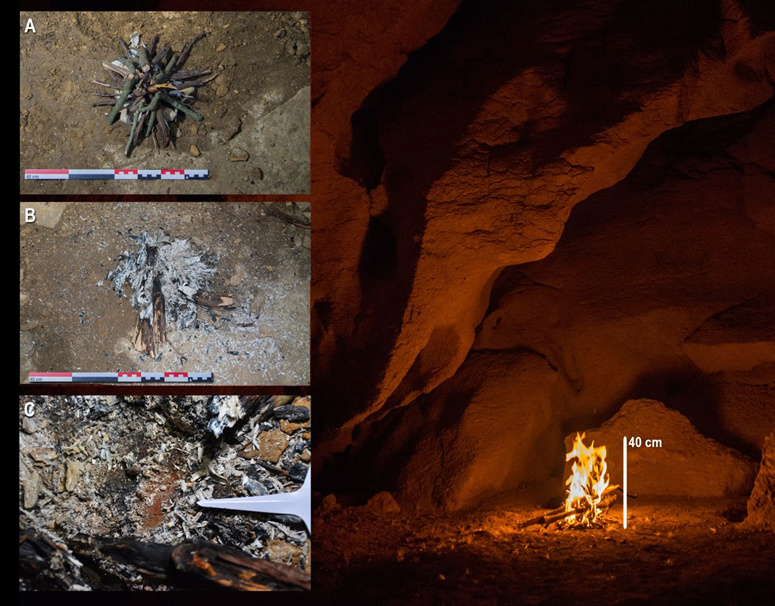Scientists simulate lighting systems used by early humans in caves

Scientists conducted an experiment with a stone lamp to simulate the lighting used by the Paleolithic in caves (PLOS ONE)
A recent study analyzes archaeological evidence in European caves
In a simulation process, a number of scientists recreated the three common types of lighting systems - torches, grease lamps, and heaters - that humans used in the Paleolithic Age to light their caves, in a scientific advance that reveals the ways they used to move within the depths of these natural cavities. And the way they live there, and the way they create arts on its walls.
According to archaeologists, including Maria Angeles Muzaina Alcaide of the University of Cantabria in Spain, each of the different lighting systems mentioned above had various advantages, and their use was an essential means of expanding the range of social and economic behavior among prehistoric peoples hundreds of thousands of years ago. .
In the study, published in the journal PLOS ONE, scientists studied archaeological evidence of the presence of lighting methods such as the remains of fires inside a number of Paleolithic caves containing cave art of inscriptions and drawings, in southwestern Europe.

Based on the results, the scientists created versions that mimic the lighting systems likely used by the indigenous cave dwellers of Isuntza 1 cave, in the Basque region of Spain.
“The experiments are based on a comprehensive review of archaeological information on this topic,” the scientists wrote in the study.
The lighting models that scientists created in imitation of these ancient lighting systems included five wooden torches, made with varying proportions of resin from ivy, juniper, oak, birch, and pine, two stone lamps powered by animal fat (bone marrow taken from cow and deer), and a small stove powered by Burning oak and juniper wood.
Archaeologists found that wooden torches made of multiple sticks worked best for exploring caves or crossing large areas, as they reflected light in various directions, reaching up to approximately six meters in experiments, and carrying them from one place to another was easy.

According to the scientists, the wooden torches also did not cause “blurred vision in the torchbearer,” even though the intensity of the light they produced was five times greater than that provided by a double-blubber lamp.
The study indicated that the light emanating from these wooden torches, most likely made in the manner of Paleolithic humans, lasted an average of 41 minutes in the study, with the two shorter-lived torches burning after 21 minutes, and the longer-lived after 61 minutes.
However, the researchers found that these torches worked erratically, required careful monitoring when burning, and produced large amounts of smoke.
On the other hand, the scientists said that the grease lamps worked better, compared to torches, in terms of illuminating small spaces over a long period of time, and the intensity of the light emanating from them was similar to that of a candle, as they were able to provide illumination up to three meters, while also producing a smaller amount of light. Smoke.

But the scientists added that these lamps were not very convenient for movement due to the distorted vision caused by the light coming from them, and they did not provide good lighting for the cave floor.
The study indicates that the flow of air currents inside the caves may have influenced the choice of location of the stoves, which released intense smoke when ignited and were extinguished by the scientists after 30 minutes of research.
Accordingly, archaeologists believe that the insights and observations gained from their experimental simulations provide a deeper understanding of what access to the darkest parts of inhabited caves at that time might have entailed, especially in order to document art such as inscriptions and graffiti.
According to the researchers, future studies of illumination, which are based on experimentation, will be useful in revealing additional details about the activities that our ancestors practiced in their caves.

“Artificial lighting was a critically important physical means of expanding complex social and economic behavior within Paleolithic human groups, particularly for the development of early Paleolithic exploration and the development of cave art,” the researchers wrote.
Source: websites

